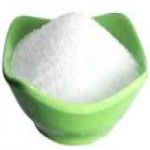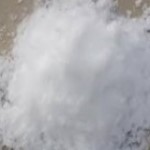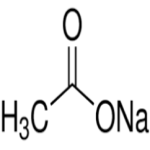CAS Number 127-09-3 Anhydrous, 6131-90-4 Trihydrate, Sodium Acetate Anhydrous Trihydrate Crystals Powder USP IP BP Ph Eur Analytical Reagent FCC Food Grade Manufacturers Exporters








CAS Number 127-09-3 Anhydrous, 6131-90-4 Trihydrate, Sodium Acetate Anhydrous Trihydrate Crystals Powder Manufacturer Exporter
For Properties Specifications of Sodium Acetate Anhydrous Trihydrate Crystals Powder Click Properties, Specifications of aaa Manufacturer.
For Uses of Sodium Acetate Anhydrous Trihydrate Crystals Powder Click Uses of Sodium Acetate Anhydrous Trihydrate Crystals Powder Manufacturer.
For For SDS MSDS Sheet of Sodium Acetate Anhydrous Trihydrate Crystals Powder Click SDS Safety Data Sheet MSDS Sheet of Sodium Acetate Anhydrous Trihydrate Crystals Powder Manufacturer.
The Properties and Specifications of Sodium Acetate Anhydrous Trihydrate Crystals Powder:
Sodium Acetate USP Grade Specifications
Sodium Acetate USP
C2H3NaO2-3H2O -- 136.08
Assay: Sodium Acetate contains three molecules of water of hydration, or is anhydrous. It contains not less than 99.0 percent and not more than 101.0 percent of C2H3NaO2, calculated on the dried basis.
Identification: A solution responds to the test for Sodium and for Acetate.
pH: between 7.5 and 9.2, in a solution in carbon dioxide-free water containing the equivalent of 30 mg of anhydrous sodium acetate per mL.
Loss on drying: Dry at 120 to constant weight: the hydrous form loses between 38.0% and 41.0% of its weight, and the anhydrous form loses not more than 1.0% of its weight.
Insoluble matter: Dissolve the equivalent of 20 g of anhydrous sodium acetate in 150 mL of water, heat to boiling, and digest in a covered beaker on a steam bath for 1 hour. Filter through a tarred filtering crucible, wash thoroughly, and dry at 105 : the weight of the residue does not exceed 10 mg (0.05%).
Chloride: A portion equivalent to 1.0 g of anhydrous sodium acetate shows no more chloride than corresponds to 0.50 mL of 0.020 N hydrochloric acid (0.035%).
Sulfate: A portion equivalent to 10 g of anhydrous sodium acetate shows no more sulfate than corresponds to 0.50 mL of 0.020 N sulfuric acid (0.005%).
Calcium and magnesium: To 20 mL of a solution containing the equivalent of 10 mg of anhydrous sodium acetate per mL add 2 mL each of 6 N ammonium hydroxide, ammonium oxalate, and dibasic sodium phosphate TS: no turbidity is produced within 5 minutes.
Potassium: Dissolve the equivalent of 3 g of anhydrous sodium acetate in 5 mL of water, add 1N acetic acid drop wise until the solution is slightly acidic, and then add 5 drops of sodium cobalt nitrite TS: no precipitate is formed.
Aluminum: (where it is labeled as intended for use in hem dialysis)— the limit is 0.2µ =g per g.
Heavy metals: the limit is 0.001%.
Organic volatile impurities: meets the requirements.
Sodium Acetate Trihydrate BP Ph Eur Grade Specifications
Sodium Acetate BP
C2H3NaO2-3H2O
Action and use: Used in solutions for dialysis; excipient.
DEFINITION
Sodium ethanoate trihydrate.
Content: 99.0 per cent to 101.0 per cent (dried substance).
CHARACTERS
Appearance: Colourless crystals.
Solubility: Very soluble in water, soluble in ethanol (96 per cent).
IDENTIFICATION
A. 1 ml of solution S (see Tests) gives reaction (b) of acetates.
B. 1 ml of solution S gives reaction (a) of sodium.
C. Loss on drying (As shown in the Relevant Test).
TESTS
Solution S: Dissolve 10.0 g in carbon dioxide-free water prepared from distilled water R and dilute to 100 ml 100 ml with the same solvent.
Appearance of solution: Solution S is clear and colourless.
pH: 7.5 to 9.0.
Dilute 5 ml of solution S to 10 ml with carbon dioxide-free water.
Reducing substances: Dissolve 5.0 g in 50 ml of water, then add 5 ml of dilute sulphuric acid and 0.5 ml of 0.002 M potassium permanganate. The pink colour persists for at least 1 h. Prepare a blank in the same manner but without the substance to be examined.
Chlorides: Maximum 200 ppm.
Sulphates: Maximum 200 ppm.
Aluminium: Maximum 0.2 ppm, if intended for use in the manufacture of dialysis solutions.
Arsenic: Maximum 2 ppm, determined on 0.5 g.
Calcium and magnesium: Maximum 50 ppm, calculated as Ca.
Heavy metals: Maximum 10 ppm.
Iron: Maximum 10 ppm, determined on 10 ml of solution S.
Loss on drying: 39.0 per cent to 40.5 per cent, determined on 1.000 g by drying in an oven at 130C.
Sodium Acetate FCC Food Grade Specifications
C2H3NaO2 Formula weight, anhydrous 82.03
C2H3NaO2-3H2O Formula weight, trihydrate 136.08
DESCRIPTION
Sodium Acetate occurs as colorless, transparent crystals or as a granular, crystalline or white powder. The anhydrous form is hygroscopic; the trihydrate effloresces in warm, dry air. One gram of the anhydrous form dissolves in about 2 mL of water; 1 g of the trihydrate dissolves in about 0.8 mL of water and in about 19 mL of alcohol.
Function: Buffer.
REQUIREMENTS
Identification: A 1:20 aqueous solution gives positive tests for Sodium and for Acetate.
Assay: Not less than 99.0% and not more than 101.0% of C2H3NaO2 after drying.
Alkalinity Anhydrous: Not more than 0.2%; Trihydrate: Not more than 0.05%.
Lead: Not more than 2 mg/kg.
Loss on Drying: Anhydrous: Not more than 1.0%; Trihydrate: Between 36.0% and 41.0%.
Potassium Compounds: Passes test.
Sodium Acetate IP Pharma Grade Specifications
Dry Basis Assay: 99 to 101%
Characteristics: Colourless Crystals
Solubility: Soluble in 0.8 part of water and in 19 parts of Ethanol (96%)
Clarity and colour of 10% w/v solution: Clear and Colourless
Alkalinity (pH of 5% solution): 7.5-9.0
Arsenic: 2 ppm maximum
Calcium and Magnesium (calculated as Ca): 50 ppm maximum
Heavy Metals as Lead: 10 ppm maximum
Iron: 10 ppm maximum
Chloride: 200 ppm maximum
Sulphate: 200 ppm maximum
Reducing Substances: Passes test
Sodium Acetate Anhydrous Analytical Reagent Grade Specifications
CH3COONa
Formula Weight 82.03
CAS Number 127-09-3
REQUIREMENTS
Assay: 99.0% C2H3O2Na
pH of a 5% solution: 7.0-9.2 at 25C
MAXIMUM ALLOWABLE
Insoluble matter: 0.01%
Loss on drying at 120C: 1.0%
Chloride (Cl): 0.002%
Phosphate (PO4): 0.001%
Sulfate (SO4): 0.003%
Calcium (Ca): 0.005%
Magnesium (Mg): 0.002%
Heavy metals (as Pb): 0.001%
Iron (Fe): 0.001%
Sodium Acetate Trihydrate Analytical Reagent Grade Specifications
NaC2H3O2-3H2O
Formula Weight 136.08
CAS Number 6131-90-4
REQUIREMENTS
Assay: 99.0-101% NaC2H3O2 . 3H2O
pH of a 5% solution: 7.5-9.2 at 25C
Substances reducing permanganate: Passes test
MAXIMUM ALLOWABLE
Insoluble matter: 0.005%
Chloride (Cl): 0.001%
Phosphate (PO4): 5 ppm
Sulfate (SO4): 0.002%
Heavy metals (as Pb): 5 ppm
Iron (Fe): 5 ppm
Calcium (Ca): 0.005%
Magnesium (Mg): 0.002%
Potassium (K): 0.005%.
The Uses of Sodium Acetate Anhydrous Trihydrate Crystals Powder:
Sodium acetate could be used as additives in food, industry, concrete manufacture, heating pads and in buffer solutions. Medically, sodium acetate is important component as an electrolyte replenisher when given intravenously. It is mainly indicated to correct sodium levels in hyponatremic patients. It is used for dialysis as a source of sodium ions in solutions. It is used in the textile industry while using an aniline dye. It is used as a pickling agent, etc. It is used for cleaning impurities such as stains, rust, or scale on metal surfaces quickly vanish when with cleaning sodium acetate.
The MSDS-SDS Hazard Statement of Sodium Acetate Anhydrous Trihydrate Crystals Powder:
Sodium Acetate Trihydrate Anhydrous SDS, Safety Data Sheet
MSDS, Material Safety Data Sheet 22-Jan-23
1. Product Identification
Product Name & Other Names: Sodium acetate or Acetic acid sodium salt.
CAS Number: 6131-90-4 (Trihydrate); 127-09-3 (Anhydrous)
EINECS: EC Number: Trihydrate is not listed. 204-823-8 for anhydrous.
Molecular Weight: 82.03 Anhydrous.
Chemical Formula: CH3COONa Anhydrous.
Relevant uses and uses advised against (if any): Industrial Manufacturing.
Suppliers: As per letterhead.
2. Hazards Identification
GHS, Globally Harmonized System Classification in accordance with 29 CFR 1910
Classification according to Regulation (EC) No 1272/2008
Not a hazardous substance or mixture according to Regulation (EC) No. 1272/2008.
This substance is not classified as dangerous according to Directive 67/548/EEC.
Labeling according to Regulation (EC) No 1272/2008
GHS Label Elements NONE |
Signal Word: None
Precautionary statements:
P261: Avoid breathing dust/fume/gas/mist/vapors/spray.
P262: Do not get in eyes, on skin, or on clothing.
P281: Use personal protective equipment as required.
P302+P352: IF ON SKIN: Wash with plenty of soap and water.
P304+P340: IF INHALED: Remove victim to fresh air and keep at rest in a position comfortable for breathing.
P305+P351+P338: IF IN EYES: Rinse cautiously with water for several minutes. Remove contact lenses, if present and easy to do. Continue rinsing.
P337+313: If eye irritation persists get medical advice/attention.
3. Composition/Information on Ingredients
Product Name & Other Names: Sodium acetateor Acetic acid sodium salt.
CAS No.: 6131-90-4 (Trihydrate) and 127-09-3 (Anhydrous)
EINECS: EC Number: Trihydrate is not listed. 204-823-8 for anhydrous.
4. First Aid Measures
Always seek medical attention after first aid measures are provided.
Inhalation: Remove to fresh air. If not breathing, give artificial respiration. If breathing is difficult, give oxygen. Get medical attention.
Ingestion: Never give anything by mouth to an unconscious person. Get medical attention.
Skin Contact: Wipe off excess material from skin then immediately flush skin with plenty of water for at least 15 minutes. Remove contaminated clothing and shoes. Get medical attention. Wash clothing before reuse. Thoroughly clean shoes before reuse.
Eye Contact: Immediately flush eyes with plenty of water for at least 15 minutes, lifting lower and upper eyelids occasionally. Get medical attention immediately.
Note to Physician: Symptomatic and supportive treatment is recommended.
5. Fire Fighting Measures
Flammability of the Product: May pose a fire hazard when exposed to elevated temperatures or by contact with an ignition source.
Auto-Ignition Temperature: >600C.
Products of Combustion: It emits toxic oxides of carbon and acetic acid when heated to decomposition.
Explosion: Fine dust dispersed in air in sufficient concentrations, and in the presence of an ignition source is a potential dust explosion hazard.
Fire Extinguishing Media: Water spray, dry chemical, alcohol foam, or carbon dioxide. Use means suitable for extinguishing surrounding fire.
Extinguishing Media Not recommended: None specified.
Special Information: In the event of a fire, wear full protective clothing and NIOSH-approved self-contained breathing apparatus with full face piece operated in the pressure demand or other positive pressure mode. At high temperatures under fire conditions, it may produce toxic or irritating fumes. Fire-extinguishing work is done from the windward and the suitable fire-extinguishing method according to the surrounding situation is used.
6. Accidental Release Measures
Personal precautions, protective equipment, and emergency procedures: Avoid breathing dust/fumes/gas/mist/vapors/spray. Use individual protective equipment (waterproof boots, suitable protective clothing, safety glasses, etc.). Do not approach facing the wind.
Environmental precautions: Do not let the product enter drains, soil, or water sources.
Methods and materials used for containment cleanup procedures and Storage: Do not inhale vapors, mist, or gas. Avoid dust formation. Contain spilled material. Cover with an inert, non-combustible absorbent material, (e.g., sand, earth, diatomaceous earth, vermiculite). Use a shovel to put the material into a convenient waste disposal container.
7. Handling and Storage
Precautions for safe handling: Apply according to good manufacturing and industrial hygiene practices. Ensure proper ventilation. In case of insufficient ventilation, wear suitable respiratory equipment. Wash thoroughly after handling. Do not drink, eat, or smoke while handling. Avoid contact with skin, eyes, and clothing. Minimize dust generation. Avoid breathing dust/fumes/gas/mist/vapors/spray. Avoid contact with eyes, skin, and clothing. Keep container tightly closed. Avoid ingestion and inhalation. Use individual protective equipment (waterproof boots, suitable protective clothing, safety glasses, etc.).
Conditions for safe storage, including any incompatibilities: Store in cool, dry, and ventilated area away from heat sources and protected from sunlight in tightly closed original container. Keep air contact to a minimum. Store protected from heat, sparks and ignition sources and incompatible materials. Avoid contact with skin and eyes. Avoid inhalation of dust/mist/vapor. Do not store with incompatible materials like strong oxidizing agents, nitric acid, fluoride, potassium nitrate, strong oxidizers and diketene.
8. Exposure Controls/Personal Protection
Airborne Exposure Limits: None established.
Ventilation System: A system of local and/or general exhaust is recommended to keep employee exposures as low as possible.
Personal Respirators (NIOSH Approved): For conditions of use where exposure to dust or mist is apparent and engineering controls are not feasible, a particulate respirator may be worn.
Skin Protection: Wear protective gloves and clean body-covering clothing.
Eye Protection: Use chemical safety goggles and/or full-face shield where dusting or splashing of solutions is possible. Maintain eye wash fountain and quick-drench facilities in work area.
Other Control Measures: Maintain good housekeeping in work area. Handle in accordance with good industrial hygiene and safety practice.
9. Physical and Chemical Properties
Appearance: White crystals or powder or granules.
Odor: Practically none. Slight odor of acetic acid may be felt.
Odor threshold: Not available.
pH: 6-10 at 1% solution at 25 C (77F)
Relative density: Not available.
Melting Point: Not available.
Initial boiling point and boiling range: Not available.
Flash point: Not available.
Auto-ignition temperature: Not available.
Decomposition temperature: Not available.
Upper/lower flammability or explosive limits: Not available.
Vapor pressure: Not available.
Vapor density: Not available.
Evaporation rate: Not available.
Flammability (solid, gas): Not available.
Partition coefficient: n-octanol/water: Not available.
Solubility: Readily soluble in water.
Viscosity: Not available.
10. Stability and Reactivity
Stability: Stable under ordinary conditions of use and storage.
Hazardous Decomposition Products: Sodium acetate trihydrate may emit fumes of acetic acid upon heating and on contact with strong acids. Oxides of carbon are released on decomposition.
Hazardous Polymerization: Will not occur.
Incompatibilities: Nitric acid, fluoride, potassium nitrate, strong oxidizers and diketene.
Conditions to Avoid: Moisture, Heat, Incompatibles.
11. Toxicological Information
Toxicity to Animals:
Oral LD50, rat; 3,530 mg/kg
Dermal LD50, rabbit; >10,000 mg/kg
Irritation, rabbit; Mildly irritating to skin and eyes
Draize test, rabbit, eye: 10 mg Mild;
Draize test, rabbit, skin: 500 mg/24H Mild;
Inhalation, rat: LC50 >30 gm/m3/1H;
Oral, mouse: LD50 = 6891 mg/kg;
Oral, rat: LD50 = 3530 mg/kg;
Carcinogenicity: No component of this product present at levels greater than or equal to 0.1% is identified as possible or confirmed human carcinogen by IARC, ACGIH, OSHA and NTP.
Mutagenic Effects: Not available.
Developmental Toxicity: Not available.
Reproductive Effects: No information available.
12. Ecological Information
Toxicity to fish
LC50 - Pimephales promelas (fathead minnow) - 13,330 mg/l - 120 h
LC50 - Lepomis macrochirus (Bluegill) - 5,000 mg/l - 24 h
LC50 Lepomis macrochirus: 5000 mg/l – 24 h
LC50 Bluegill/Sunfish: 5000 mg/l; 24 h
Data on sodium acetate anhydrous basis.
Toxicity to daphnia
Water Flea Data: 48 Hr. EC50 water flea: 5800 mg/l 48 h.
Data on sodium acetate anhydrous basis.
Biodegradability: 99 % - Readily biodegradable
Results of PBT and vPvB assessment: This substance/mixture contains no components considered to be either persistent, bioaccumulative and toxic (PBT), or very persistent and very bioaccumulative (vPvB) at levels of 0.1% or higher.
13. Disposal Considerations
Whatever cannot be saved for recovery or recycling should be managed in an appropriate and approved waste disposal facility.
14. Transport Information
DOT USA, TDG Canada & ADR/RID Europe: Not controlled.
IMDG/IMO: Not controlled.
IATA/ICAO: Not controlled.
15. Regulatory Information
USA:
SARA 311/312 Hazards: See section 2.
California Prop 65: Not listed.
Section 16 - Additional Information
DISCLAIMER: The information and recommendations set forth herein are presented in good faith and believed correct as of the date hereof. It is compiled from various sources, and it is not necessarily all inclusive nor fully adequate in every circumstance. In addition, these suggestions should not be confused with nor followed in violation of applicable laws, regulations, rules, or insurance requirements applicable. This SDS MSDS sheet is intended only as a guide to the appropriate precautionary handling of the material by a professionally trained person using this product. Individuals receiving the information must exercise their independent judgment in determining its appropriateness for a particular purpose. This shall not constitute a guarantee for any specific product features and shall not establish a legally valid contractual relationship. In no case shall our company be liable to loss or damages by the product user.Anmol Chemicals & Pharmaceuticals Pvt. Ltd. is an off-shoot of Anmol Chemicals Taloja. It is located in MIDC Taloja and it is manufacturing pharmaceutical grades of API, Excepients, Food grade and Reagent grade chemicals. Anmol Chemicals & Pharmaceuticals Pvt. Ltd. is a several decades old group of companies, engaged in manufacturing, supplying, distributing, wholesale supplies for actual users, retail or small pack supplies for research and development chemicals, fine and speciality chemicals, pharmaceutical excipients, mineral fortifiers in chemically pure, Analytical reagent grade, IP BP USP Ph Eur EP JP and other pharmaceutical grade monograph including FCC Food grade chemicals and Nutraceuticals, Mineral Fortifiers at best prices.

Sodium Acetate Anhydrous Trihydrate Crystals Powder Structure
CAS Number 127-09-3 Anhydrous, 6131-90-4 Trihydrate, Sodium Acetate Anhydrous Trihydrate Crystals Powder Manufacturer Exporter
ANMOL CHEMICALS & PHARMACEUTICALS Pvt. Ltd.
India, USA, Europe, UAE
TELEPHONE: +912223770100
Navi Mumbai, INDIA
e-mail: info(At the rate i.e. @)anmol.org
Copyright. 23-nov-24
We manufacture:
Glacial Acetic Acid Manufacturer
Aluminium Sodium Silicate or Sodium Aluminosilicate
Dihydroxyaluminum Aminoacetate
Ferric Chloride Anhydrous Hexahydrate

